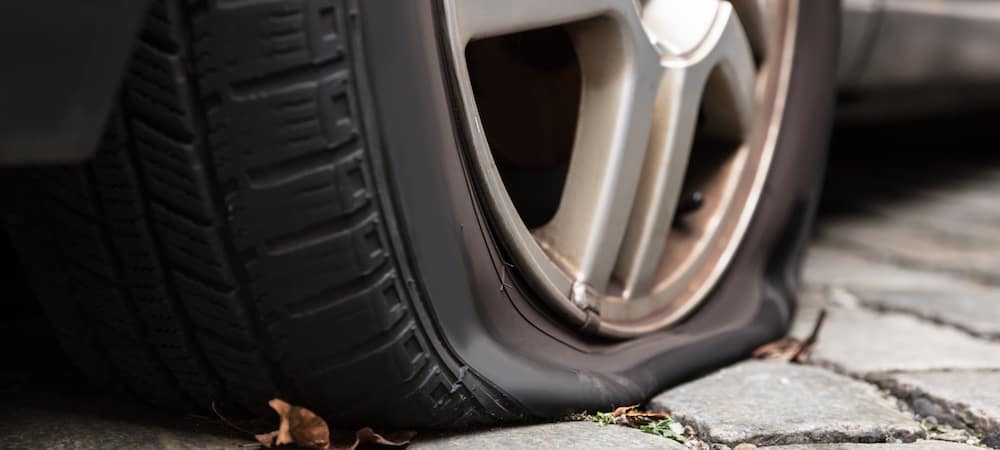Last Updated October 7, 2022
TireHungry.com is reader-supported. When you buy through links on our site, we may earn an affiliate commission at no added cost to you
The main reason why vehicles hit a curb is because of unseen objects or terrains on the road or even the weather. This usually happens at night, a strong rain, or during wintertime. From potholes, ice shards, and curbs, hitting a curb is certainly such a drag. It makes it even more stressful when you don’t have enough guidelines on what to do when running into one.
Hitting a curb can certainly ruin your tire. As much as it’s hard to see objects and debris on the side of the road, it’s also tough to determine what’s ahead especially when running at a high speed.
What's In This Guide?
Listing down all the possible scenarios on a curb hit will give you a more collected and analytical approach on the matter. It’s best to see all things and consider every possible details that may have happened during the hit.
It is important to know the possible results from curb hits. Aside from the rim and the suspension, tires can also tear up because of the traction and the uneven distribution of weight. It can also cause trouble from receiving cuts and collisions with sharp objects.
Treads May Incur Punctures Due To The CollisionThe tread itself could get damaged if it receives the majority of the force depending on the degree of the hit. This would result in a possible slow leak and damaged cords. Even worse is that this scenario can cause a flat tire. It is true, however, that treads are more protected compared to the sidewalls, but it may fail to completely protect the whole tire from a strong hit.
Even objects that aren’t that sharp could still penetrate the tread if the trajectory of the object is direct to the tread and if the speed is too high.
The Tire Bead and Tire Belt May Not Be Able To Withstand The Force Of The CollisionAs we all know, beads are responsible for keeping the tire intact with the rim itself.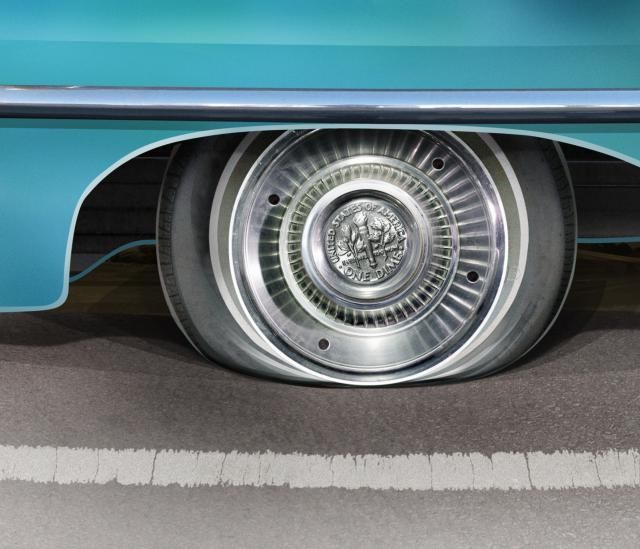 If the bead is moved due to the hit, the tire may fail to hold the air pressure inside and could cause the tire to flatten out or even blow out.
If the bead is moved due to the hit, the tire may fail to hold the air pressure inside and could cause the tire to flatten out or even blow out.
The same thing goes with the tire belt. If the curb hit is strong enough to inflict damage on the belt, the vehicle may experience a stronger bounce and may cause the tires to flatten or blow out completely.
The Valve May Get Busted Due to The HitThe tire valve could easily break if the hit happened sideways and there were objects that collide with the rim. This will instantly cause your tire to flatten out quickly. Ideally, you would hear a strong whistle sound if ever the valve is damaged.
Even when it did not happen sideways, a strong curb hit could bend the wheel and affect the valve right away. You will instantly feel the depletion of air from the tires once the valve breaks apart.
Damaged Suspension Can Flatten or Blowout The TireA curb hit does not necessarily mean that your suspension is damaged right away, some vehicles experience this and still moves as if nothing happened. It is always according to the degree of the hit that gives the hint of whether your vehicle’s suspension received any damage.
It is always according to the degree of the hit that gives the hint of whether your vehicle’s suspension received any damage.
An unaligned suspension can certainly tear down the durability of the tire. For example, you have noticed that the rims and the tires seem to be fine but you failed to diagnose the condition of the suspension. A vehicle that runs with an unaligned suspension will cause the tire to run unevenly, wear down, and may result in a tire blowout which could be even more dangerous.
You can right away notice the changes by observing the steering wheel upon driving. The steering wheel will go on one side instead of heading towards a straight line. From that, you would be able to determine whether the suspension is busted or there is something wrong with the tire itself.
What to Do In Case Curb Hit Happens?The primary objective when a curb hit happens is to pull over. You need to inspect the car thoroughly and cross out any possible issues a car may have due to the hit.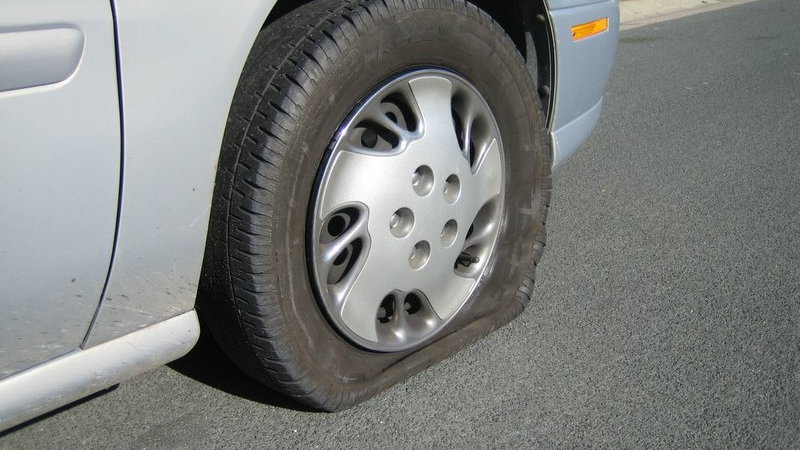 It is also an advantage if you have tools ready whenever this case happens. Staying calm and collected is necessary for you to keenly observe your vehicle.
It is also an advantage if you have tools ready whenever this case happens. Staying calm and collected is necessary for you to keenly observe your vehicle.
The possibility of getting a damaged tire isn’t as high as getting a damaged rim or suspension components. But it is still possible. To monitor whether the tire is in a safe state or not, here are a few steps on how to check the conditions of your vehicle and your tire according to the difficulty and availability of the tools needed.
Step 1: Check Sidewalls and ValveThis is the easiest thing to do whenever a vehicle hits a curb. Checking the sidewalls will verify if the side part of the tire has a cut. This is important because sidewalls have lesser strength to manage tension and pressure compared to the center part of the tire and the treads. Also, it’s easier to check the condition of the tires from the sideways because it does not require any mechanical tool for observing.
Next is the valve.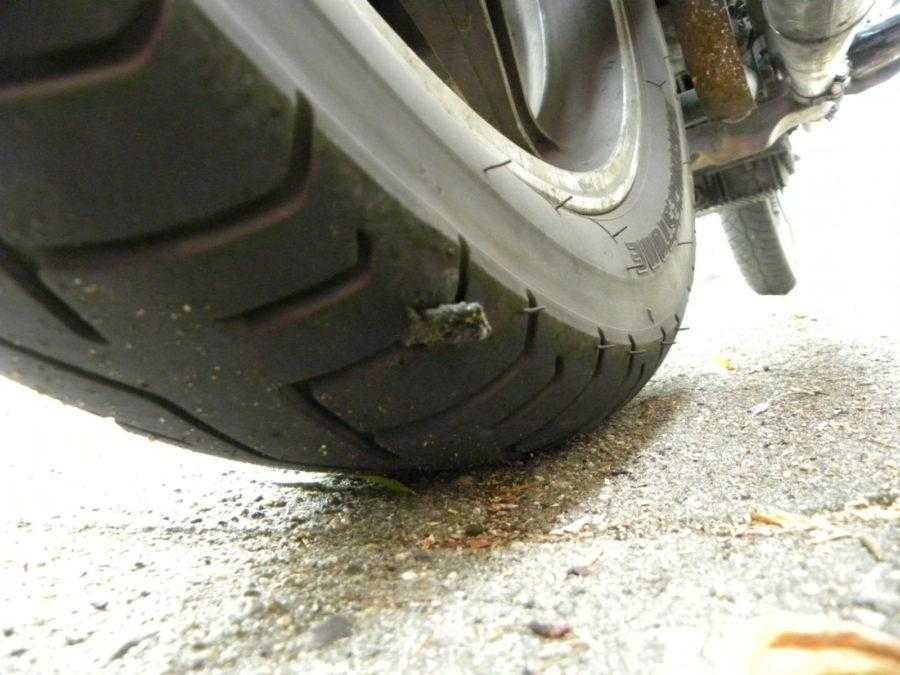 You need to see whether the tire valve got into any collision or if it obtained a slow leak or malfunction due to the hit. Like the sidewalls, it’s easier to check on the valve first before proceeding to the next step because it requires no mechanical tool for checking.
You need to see whether the tire valve got into any collision or if it obtained a slow leak or malfunction due to the hit. Like the sidewalls, it’s easier to check on the valve first before proceeding to the next step because it requires no mechanical tool for checking.
Now we proceed to the more complex side of diagnosing your tire condition. Primarily you want to check whether the center part of the tire got any cuts due to the hit. Try to feel any air coming out of the tire and leave a mark on it to determine where the cut is found. In some cases, if the rim and suspension are not damaged, you can still try and proceed with fixing the tires with sealants.
You also need to check whether there are cords that popped out because of the hit. Cords are responsible for maintaining the tire’s strength and shape. Choosing to drive a vehicle with a defective cord can be inconvenient and dangerous. That is why this is a crucial part of checking because it will determine whether the tire can still be fixed at the moment of the hit.
If all goes well with the rim and the tire, you can proceed to the nearest repair shops. But if you think that the tire is messed up, do not force to drive as it is not safe.
Step 3: Use A Gauge to Check The Pressure of the TireIf available, it’s also good to use a gauge in checking the tire’s pressure. This is important because there are times tire problems occur but cannot be seen right away. By using a gauge, you would be able to know whether there are changes in the tire pressure after the hit. Ideally, you want to have 30-35 psi. If it goes lower than that, it is highly encouraged that you apply sealant, replace the damaged tire, or consult an expert.
Keep in mind that upon checking the gauge, the tire pressure can still change depending on the intensity of the hit. A 33 psi could drop into 28 in a matter of minutes, that is why it is best not to take the risk of driving the vehicle off right away after the collision.
Step 4: Keep Your Tools With YouIt’s better to be ready than to be sorry.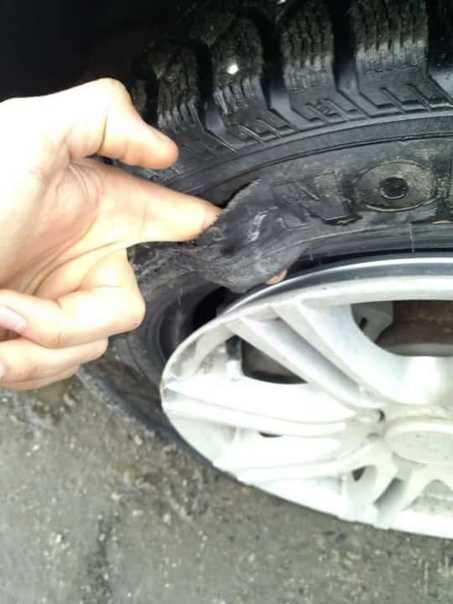 By getting all the tools for tire replacement prepared, given the fact that you have established that the rim and the suspension are still capable of running, it’s best that you change your tires and go to the nearest repair shop as possible.
By getting all the tools for tire replacement prepared, given the fact that you have established that the rim and the suspension are still capable of running, it’s best that you change your tires and go to the nearest repair shop as possible.
If you have considered all the issues and it turns out that your vehicle is still safe for running, the only place to go is the mechanic. Do not risk driving ahead for a longer period of time if not necessary. Do not also drive at full speed because the vehicle’s capability to run does not mean that it is safe enough to withstand the speed.
Move Your Vehicle To a Wider SpaceThe purpose of this is you want to thoroughly check all the possible issues your vehicle may have after the curb hit. By moving your car into a safe wide area, you can start checking the engine and transmission of your more vividly.
You can also start checking your other tires if in case that they were also affected by the hit.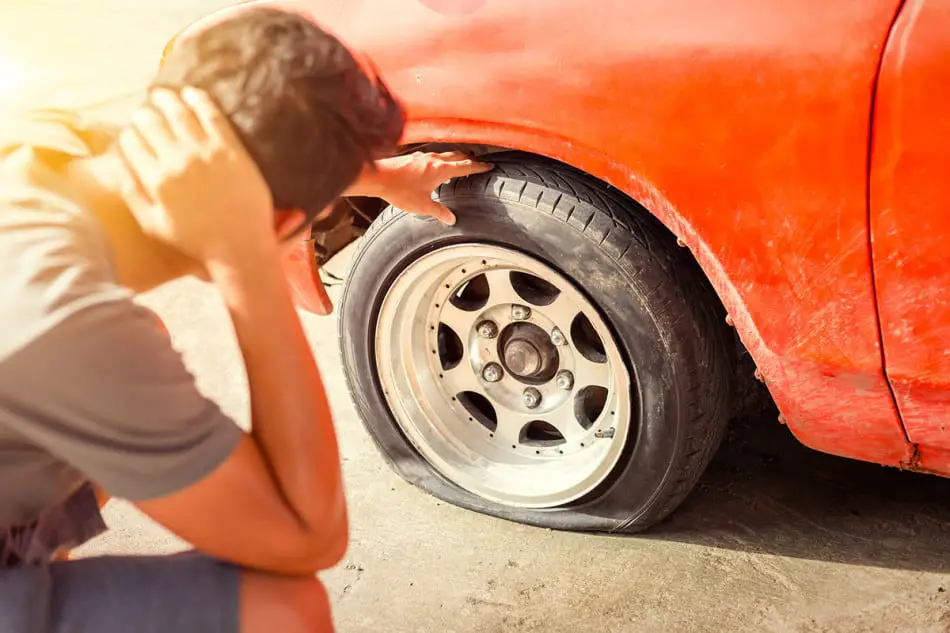 If you have considered all the issues and it turns out that your vehicle is still safe for running, you can try to move your car into a wide space and try to inspect it once more until you’ve reached a repair shop.
If you have considered all the issues and it turns out that your vehicle is still safe for running, you can try to move your car into a wide space and try to inspect it once more until you’ve reached a repair shop.
To ensure that you can still bring your car to a mechanic or a local expert near you, take routes that are less or has no bumpy roads. Take care of the current condition in order to minimize any possible issues ahead. This will prevent your tire from being stressed out and from flattening.
Be Cautious About The Condition Of The Vehicle As it RunsThings may change suddenly when the car starts running. You have to make sure that you observe everything as you drive the vehicle apart from driving slow and steady. A small sound or a small change in the vehicle’s condition should be enough sign to pull over. Make sure to check the steering wheel, suspension, transmission, and tires.
FAQsIs It Safe To Drive Your Car Even When The Tire’s Sidewall is Ruined?The answer is no.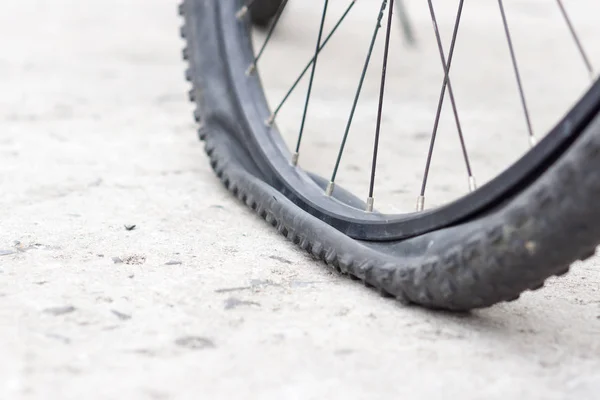 If you have established that the sidewall of the tires is not doing so well, you should not drive the car. Instead, replace the tire or contact a car mechanic near you. Driving your car with a ruined sidewall can cause a lot of trouble as it cannot hold anymore the air pressure inside the tire. As it starts running, heat will also play a role in reducing the grip of your tire and may cause the tire to flatten or blow out.
If you have established that the sidewall of the tires is not doing so well, you should not drive the car. Instead, replace the tire or contact a car mechanic near you. Driving your car with a ruined sidewall can cause a lot of trouble as it cannot hold anymore the air pressure inside the tire. As it starts running, heat will also play a role in reducing the grip of your tire and may cause the tire to flatten or blow out.
If things go well, and you weren’t in a serious collision, tire damage can soon occur over a longer period of time than expected. It is necessary to have your tires checked every week at the very least. You can also bring it to tire experts and mechanics for further diagnosis.
ConclusionIt is our responsibility as drivers to be distinctive enough on which road to take and how fast we should go. Curb hits are indeed an unfortunate and stressful scenario and no one wants to be in the position of having to experience all these things.
But now, we have the ability to stay informed and be organized with what to do step by step when a hit occurs. Overall, the most important thing that we should all keep in mind is to be safe and keep calm on the road.
After all, curbs, broken roads, and potholes have always been there. For us to be able to avoid them, we have to be informed well enough on more convenient detours and not risk our vehicles passing into rough roads.
Recently Published GuidesTop Tire Retailers
Striking a curb with your vehicle can cause damage to various components that don’t actually come into physical contact with the curb. These components work in synchronicity to allow you to steer your vehicle and provide a more comfortable and safer ride.
When your tire or rim strikes a curb with sudden force, it sends a shock wave through the system and can result in your vehicle becoming unsafe to drive or completely inoperable.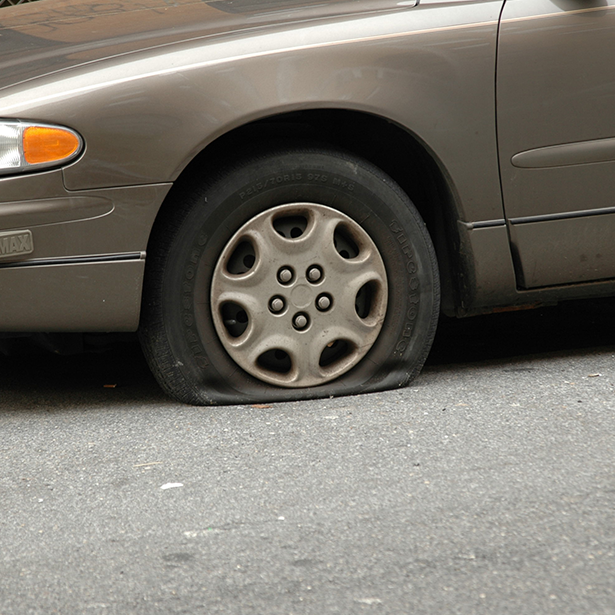 Therefore, it’s important to have your vehicle checked by a qualified mechanic after hitting a curb, even if there is no visible damage. Here are a few of the possible repercussions of a curb strike.
Therefore, it’s important to have your vehicle checked by a qualified mechanic after hitting a curb, even if there is no visible damage. Here are a few of the possible repercussions of a curb strike.
Tire or Rim Damage
Tire damage can include an actual laceration of the sidewall of the tire, which is more readily apparent because of the likelihood of the tire going flat immediately after the event. The sidewall of a tire is much thinner than the treads – often only one quarter inch thick.
However, the valve stem, which is used to inflate the tire and protrudes from the side, may also become damaged. This leads to a slow and persistent leak and an unexpected flat tire the morning after the strike.
A bent wheel rim can also cause a tire to leak, either immediately or slowly, because it can no longer provide the proper seal. Bent rims can often be repaired. However, depending upon the severity of the damage, they may need to be replaced.
Wheel Misalignment
This is a common hazard associated with a curb strike.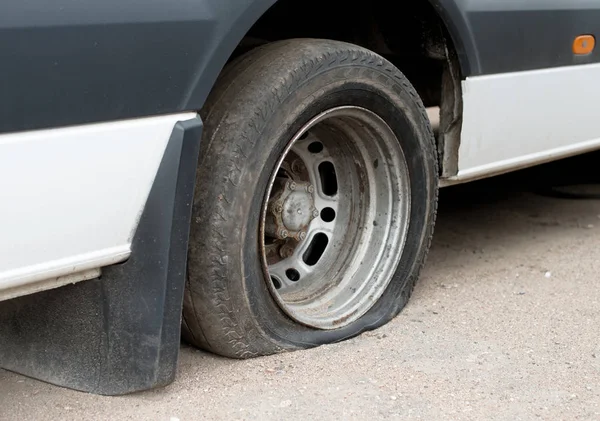 When your wheel hits a curb, the force will cause the wheel to face in a different direction than the other wheels. This is especially troublesome and dangerous in the front steering wheels, which are the primary victims of curb strikes.
When your wheel hits a curb, the force will cause the wheel to face in a different direction than the other wheels. This is especially troublesome and dangerous in the front steering wheels, which are the primary victims of curb strikes.
When your front wheels are out of alignment, your vehicle is more difficult to steer. In addition, because the wheels are continuously competing for dominance, your front tires face greater friction with the surface of the road. This leads to increased gas mileage as well as premature tire wear – in addition to the immediate safety concerns.
A particularly vicious strike can leave one wheel visibly out of alignment, rendering the vehicle inoperable. However, many wheel misalignments are imperceptible to the eye and require a skilled service mechanic to diagnose and repair the problem.
Steering and Suspension Damage
The steering and suspension components in your vehicle work interdependently to provide a safe and comfortable driving experience. When one or more of these parts is damaged by a curb strike, your ability to drive safely is compromised.
When one or more of these parts is damaged by a curb strike, your ability to drive safely is compromised.
For example, your vehicle’s tie rods provide a link between the wheels and the steering mechanism. The springs absorb the shock of uneven road surfaces, and the struts prevent the vehicle from bouncing uncontrollably from the actions of the springs through hydraulic pressure that stabilizes the vehicle.
Tie rods are designed to accommodate the movements of the struts and springs through their ability to pivot in all directions. However, a sudden and violent curb strike can cause tie rods to become bent and ineffectual, which leads to inconsistent steering ability and excessive tire wear.
If a strut is damaged, it will no longer be able to mitigate the bouncing of the corresponding spring. This can also lead to subsequent tie rod damage as well as loss of control through excessive bouncing when driving on a rough patch of road.
Any of these issues could pose an immediate or future problem for you and your vehicle.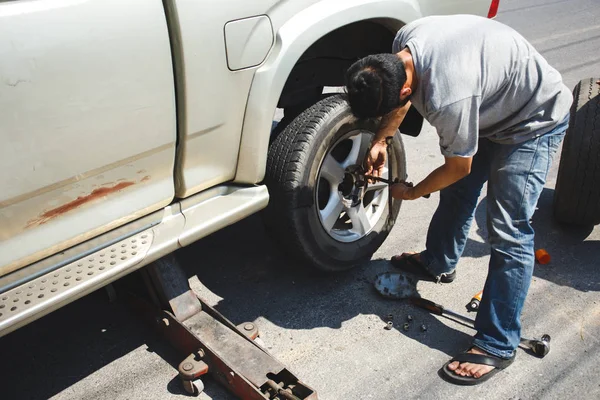 That’s why it’s important to watch your speed, especially on curves in the road and during inclement weather.
That’s why it’s important to watch your speed, especially on curves in the road and during inclement weather.
It just as important to have a trusted and experienced repair facility to inspect your vehicle after a particularly nasty curb strike. If you’re in the San Rafael, CA, area, then take your vehicle to Neuhaus Service, Inc. after your battle with a local curb. We’d be happy to take a look.
Is one of your car's tires flat again? And now the wheel is almost on the rim. Because of what this happens, because you can not find visible damage. No puncture, no cut. What happened? In fact, tires can poison the air not only because of punctures. Let's name 7 main reasons due to which problems may arise.
At the same time, tires can deflate differently. With different intensity and speed. Sometimes a problematic tire cannot last a week in an inflated state, and sometimes it easily holds atmospheres for more than two or three weeks, until the pressure reaches similar values.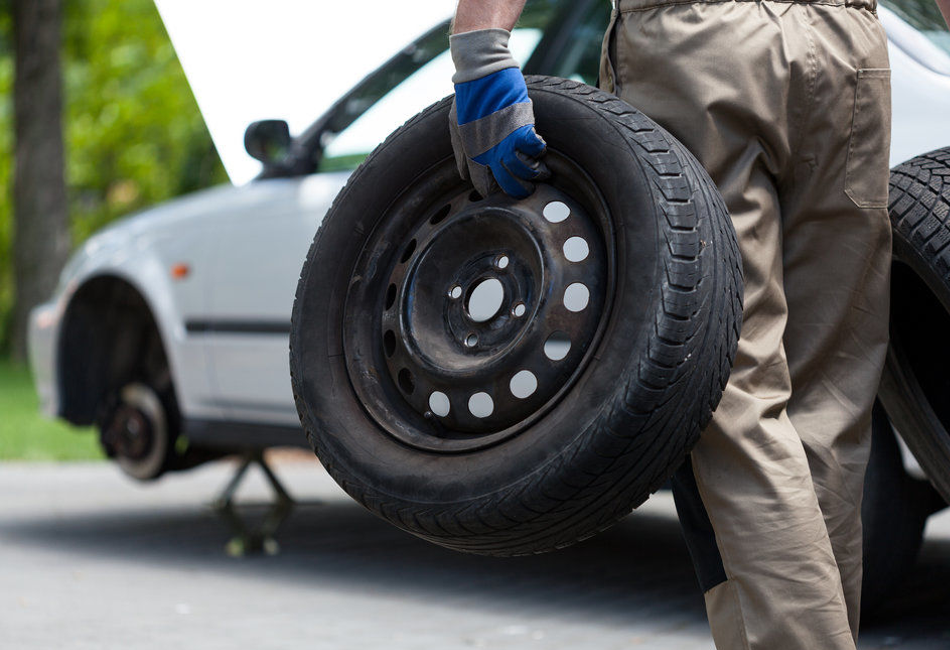
One explanation for these surges is a change in temperature, which results in a change in tire pressure in the wheel. But this is not the reason why the tire is flat.
If the overboard temperature remains constant and the tire(s) on your vehicle bleed over and over again, there is a leak that needs attention. Why is this happening?
age;
chemical contamination;
excessive loads.
All of these, individually or in combination, can cause tire or rim parts to fail over time. So, here are 7 reasons why this happens:
photo: nokiantires.com
Hitting any pointed object can puncture a tire. A tiny nail can puncture and then fall out, causing a slow leak of 0.1 to 0.3 atmospheres per week. Visual inspection of the tire will not give results. You either need to treat the wheel with soapy water and see where it bubbles, followed by a visit to a tire service, or go there right away.
photo: etrailer.com
Made of rubber, tubeless valves can deteriorate over time. Rubber will harden and crack, reducing their tightness.
They can also be damaged by hitting a curb or other mechanical impacts (such as a car wash brush at a car wash). Keep valve stems clean (do not lose caps).
Also, overtightening the cap can damage the valve core. The valve may begin to bleed because of this.
photo: reddit.com
A torn tire is not safe, especially if the break is on the side wall (not uncommon when "grinding" to the curbstone). Driving on a tire with a loose bead, even if the leak is small, is dangerous! Combine this with an under-inflated tire that can overheat and you have a real explosive mixture!
photo: pirelli.com
The bead is where the tire fits snugly against the rim. The bead on older tires that have started delamination may have reduced elasticity and no longer provide adequate sealing. The side ring weakens, the side zone begins to let air through. The pressure drops.
The bead on older tires that have started delamination may have reduced elasticity and no longer provide adequate sealing. The side ring weakens, the side zone begins to let air through. The pressure drops.
See also
Flat tire, how to find a puncture in a tire
Also, the bead ring can be damaged by frequent mounting/dismantling of tires. The only thing that can save you from a constant headache in this case is buying a new tire.
photo: crsautomotive.com
The problem may be hiding in the rim itself. It can start to corrode (and this can happen both with steel stampings and with light alloy discs) due to old age, improper storage, high humidity, reagents and a number of other factors, up to low-quality disc alloy.
Corrosion where the rim meets the tire bead is a common cause of air pressure loss.
Cast aluminum and magnesium alloy wheels are more susceptible to corrosion.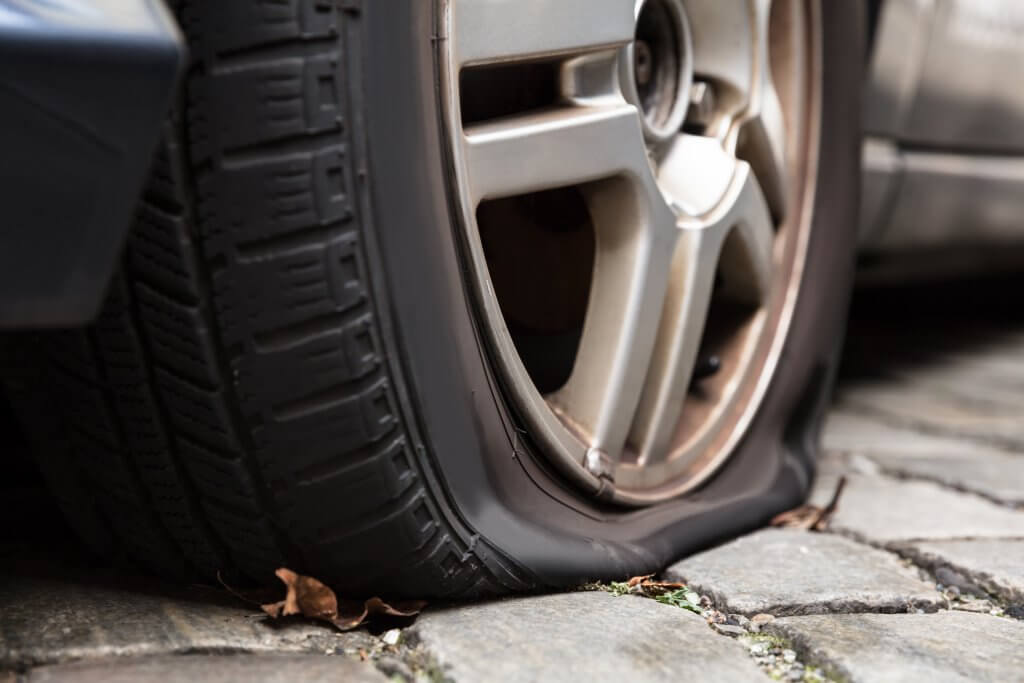 Make sure the tire shop technician carefully inspects the area where the wheel seal and tire ring are located for oxides before changing the wheels. What's more, even a new tire will never fit properly on a badly rusted wheel and will start to corrode and wear improperly.
Make sure the tire shop technician carefully inspects the area where the wheel seal and tire ring are located for oxides before changing the wheels. What's more, even a new tire will never fit properly on a badly rusted wheel and will start to corrode and wear improperly.
An often overlooked possibility of pressure loss is the air escaping through the wheel rim itself. The reason is as follows:
poor casting;
severely advanced corrosion;
mechanical damage to the disc - cracks, bends.
In this case, there are two options: repair the disc, if possible, or buy a new one.
Do not pour sealant into a tire to fix a rim problem. It won't help. But at the same time, you can render a normal tire unusable or “kill” the sensor of the wheel pressure monitoring system.
photo: www.smartmotorist.com
You are playing a dangerous game if you think that inflating a bad tire to capacity will increase the time between pumping. In addition to a harsh, noisy ride due to over-inflated tires, an over-inflated tire will begin to “eat the tread” faster, wear out and become unusable.
In addition to a harsh, noisy ride due to over-inflated tires, an over-inflated tire will begin to “eat the tread” faster, wear out and become unusable.
In addition, hard, over-inflated tires are unstable while driving, lose traction more easily due to reduced tire contact with the road, and are more likely to damage the sidewall cord. Due to excessive pressure, the cords will break and a “hernia” may appear.
photo: www.smartmotorist.com
In summary, what can damage a tire or rim? Nail holes, metal splinters, broken glass, pieces of wood, other rubbish on the road. Cracked rim due to overload, impact, age, or damaged from hitting the edge of a deep hole or sidewall curb. All this is considered a dangerous type of damage that requires immediate repair. Do not try to prolong the existence of a tire or a wheel that has begun to slowly deflate if its repair is impossible. Might be more expensive on the way!
So, as you can see, there are many reasons why your tire might be flat.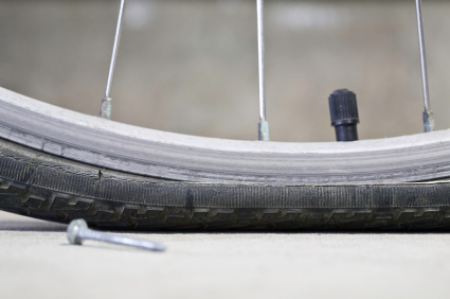 Check tires and air pressure at least once a month. Properly inflated tires last longer, wear more evenly and are safer to ride. And at the first sign of pressure bleeding, contact a tire fitting specialist.
Check tires and air pressure at least once a month. Properly inflated tires last longer, wear more evenly and are safer to ride. And at the first sign of pressure bleeding, contact a tire fitting specialist.
Cover: medium.com
The absence of a spare wheel or a standard "roll-in" seriously complicates the situation. If the driver has the skills, you can put a temporary patch on the puncture, otherwise you will have to order a tow truck.
We recommend carrying a spare wheel, a repair kit for various occasions, the necessary tools, then you can get out of any traffic situation with dignity. If all this is not there, then you can drive on punched rubber a short distance to a service station or tire fitting. We are not talking about hundreds of kilometers of travel, we are talking about a short distance.
Leakage of air from a car tire can occur in different situations. At the same time, punching is not necessary, there are other unforeseen and unpleasant situations. Most common:
At the same time, punching is not necessary, there are other unforeseen and unpleasant situations. Most common:

Potholes or bumps in the road can be a serious problem. Hitting such an obstacle at high speed can lead to deformation of the car disk, subsequently to damage to the rubber. Very serious damage, which is impossible to fix on your own, without the use of special equipment, you need to go to a tire service.
Use of used car tires - adhere to manufacturer's recommended service life. Otherwise, the wheel may deflate due to high wear. There is a risk of explosion directly during operation.
Problems exist with tubeless tires - the fitting sometimes does not fit well on the disc, air leaks.
The main causes that lead to damage to car tires and air leakage are indicated. Whether it is possible to drive on a flat tire is determined by the driver himself, taking into account his experience and capabilities.
Driving with a flat tire is not recommended. Driving a car is significantly more difficult, there is a risk of getting into an accident, creating a threat to other road users.
The main problems that can be caused by driving with low tire pressure are:

A flat tire is a serious hazard. Each driver must understand this and take all necessary measures to eliminate the problem. In no case should a puncture be ignored, at high speed the situation can completely get out of control. The ideal would be to replace the wheel with a spare, repair at the nearest tire shop.
A car tire is a complex system. Consists of different elements. Manufacturers use special technologies and materials to provide the declared driving characteristics of the car. The special pattern on the main part of the tire has its own functionality, and does not serve solely for beauty. Any deviation from the norm leads to a decrease in the functionality of the tire, respectively, the car loses its qualities. Its use becomes unsafe until the problem is solved.
Summer Drive Protection Sound Comfort
Rating:
4.5
Tires Goodyear Eagle F1 Asymmetric 3 SUV
Summer Drive protection
Rating:
4. 5
5
Tires Goodyear Eagle Sport TZ
Summer Drive protection
Rating:
4.5
Tires Goodyear EfficientGrip 2 SUV
Summer Drive Protection Run On Flat
Rating:
4.5
Tires Goodyear EfficientGrip Performance
Winter Drive protection
Tires Goodyear UltraGrip Arctic 2 SUV
Winter Drive Protection Sound Comfort
Rating:
4.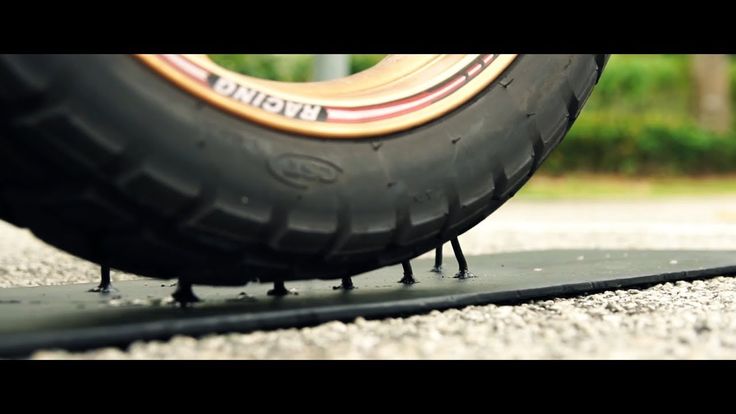 5
5
Tires Goodyear UltraGrip Ice 2
Winter Drive Protection Sound Comfort
Rating:
4.5
Tires Goodyear UltraGrip Ice SUV
Winter Drive protection
Tires Goodyear UltraGrip Performance+ SUV
All season Drive Protection
Rating:
5
Tires Goodyear Vector 4Seasons Gen-3 SUV
Summer Drive Protection Run On Flat
Rating:
4
Tires Goodyear Wrangler HP All Weather
All season Drive Protection
Rating:
4. 5
5
Tires Goodyear Vector 4Seasons
Summer
Rating:
4.5
Tires Goodyear Wrangler All-Terrain Adventure with Kevlar
Summer Drive Protection
Rating:
4.5
Tires Goodyear EfficientGrip SUV
Summer Drive Protection Run On Flat
Rating:
4
Tires Goodyear Eagle F1 Asymmetric SUV
It is worth noting that under no circumstances should you drive with a completely flat tire. The situation can get out of control of the driver at any time, the tire will fly off the disk, he will receive damage that will lead to new problems. It's best to call a tow truck, no matter the cost.
The situation can get out of control of the driver at any time, the tire will fly off the disk, he will receive damage that will lead to new problems. It's best to call a tow truck, no matter the cost.
An exception to the rule may be a tire that still has some air left in it. You can try to get to a service station or tire fitting. You can also try to inflate the tire to give yourself more time.
Low pressure driving is possible subject to the following rules:
The average distance allowed to drive with a half-flat tire is 10 kilometers. This is only allowed if the above rules are observed.
Delays in dealing with low tire pressure, punctures or other damage will result in negative consequences.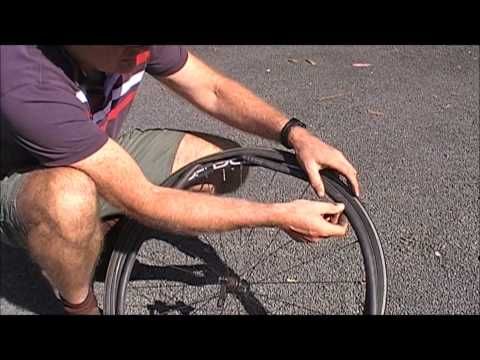 There may be problems with the operation of the following systems:
There may be problems with the operation of the following systems:
A vehicle with flat tires is a danger to other road users and its driving characteristics are affected.
It must be understood that movement with insufficient pressure leads to deformation of the rubber. You run the risk of completely damaging the tire, subsequently replacing it with a new one. Therefore, the decision to drive on half-flat tires must be made carefully, carefully evaluate all the consequences and alternatives.